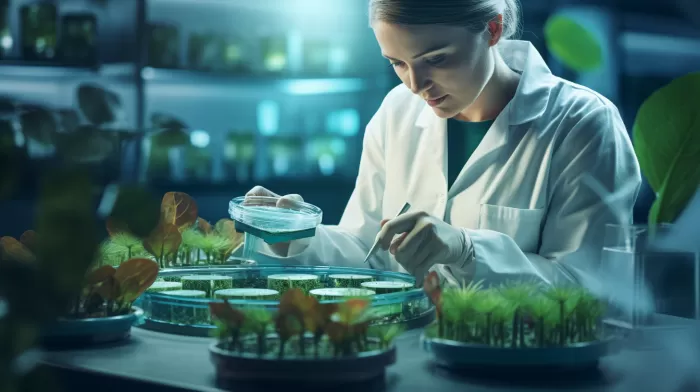Just when you thought your dinner plate was safe from genetically modified organisms (GMOs), a new laboratory trick is about to make the situation a whole lot worse. Major agrochemical companies are now using genetic engineering techniques to create new, genetically modified crops that dodge the need for even minimal regulation.
Loopholes in the regulatory system
For years, concerns have been raised about the potential harmful effects of GMOs on human health and the environment. Proponents of GMOs argue that the technology can increase crop yields and offer more hardy and resilient plant varieties. In many cases, the jury is still out on whether GMOs are harmful or helpful, but a bigger problem now comes with oversight and regulation.
Part of the issue is the lack of transparency when it comes to GMOs on the market. For instance, GMO foods are not required to be labeled, making it unclear for the consumer to know what they are ingesting. But thanks to a new loophole in the agricultural regulations, GMO-producing companies can now evade regulation by claiming to use a different method of plant manipulation called “genome editing.”
Genome editing versus genetic modification
Companies such as the Scotts Miracle-Gro Company, Monsanto, and Cellectis Plant Sciences claim that their new laboratory techniques consist of “genome editing” rather than genetic modification. They argue that because of this, their procedures are not subject to regulatory scrutiny by the Department of Agriculture.
According to Michael Hansen, a senior scientist at Consumers Union, these companies are taking advantage of a technical loophole. Although GMOs can have significant ecological impacts, genome-edited crops effectively escape any regulation.
In 2013, Jim Hagedorn, the CEO of Scotts, revealed to analysts that his company could now market a wide array of unregulated and genetically-engineered products. Since taking plant genetic material from a non-pest species and avoiding specific transformation technologies does not breach any regulations, these crops are technically allowed to enter the market.
From lawn to dinner plate
These new products could potentially end up in a variety of different places, including your lawn and your dinner plate. What’s unknown at this point are the long-term effects of these genetically modified products on human health and the environment. Unregulated GMOs may cause unforeseen problems that we simply can’t predict. With the current administration rolling back federal regulations, the situation is unlikely to change anytime soon.
The need for better GMO regulation
In this uncertain time, it is more crucial than ever for the public to be aware of the growing presence of GMOs in our environment and food supply. Key aspects of this awareness should include a push for transparent labeling of GMO products, updated agricultural regulations that cover genome editing and close current loopholes, and third-party testing of GMOs for potential health and environmental impacts.
If industry giants like Scotts and Monsanto continue to bypass regulations with new genetic engineering methods, the potential for unforeseen consequences will only grow. The solution is not to ban GMOs outright but to have a robust regulatory system in place that keeps these corporations in check and protects both public health and the environment.
In the meantime, if you’re concerned about GMOs, you can opt for organic products, which are required to be produced without the use of genetic engineering. You might also consider growing your own fruits and vegetables to ensure that you have control over the seeds and cultivation methods.



